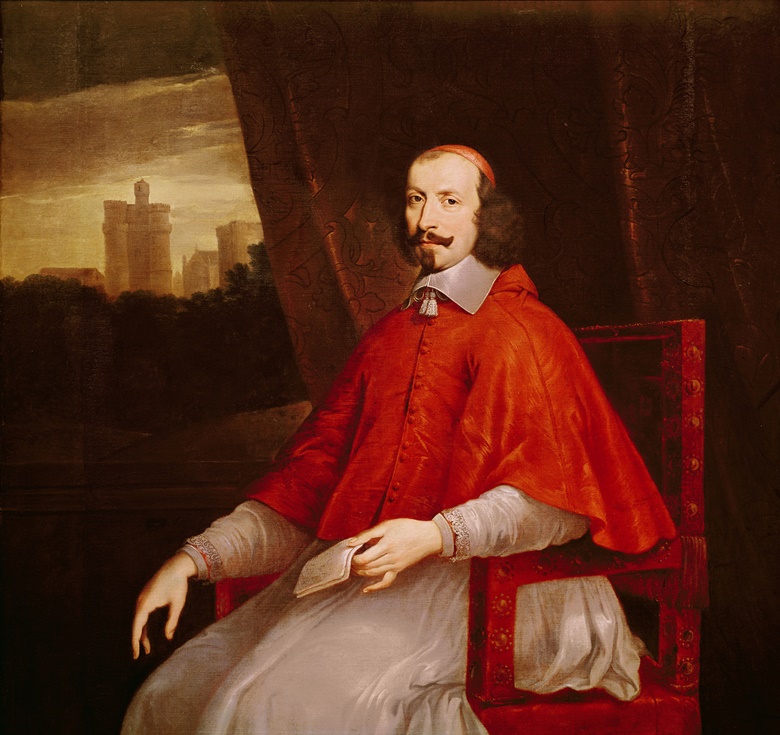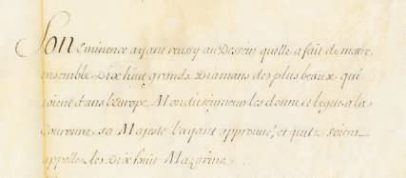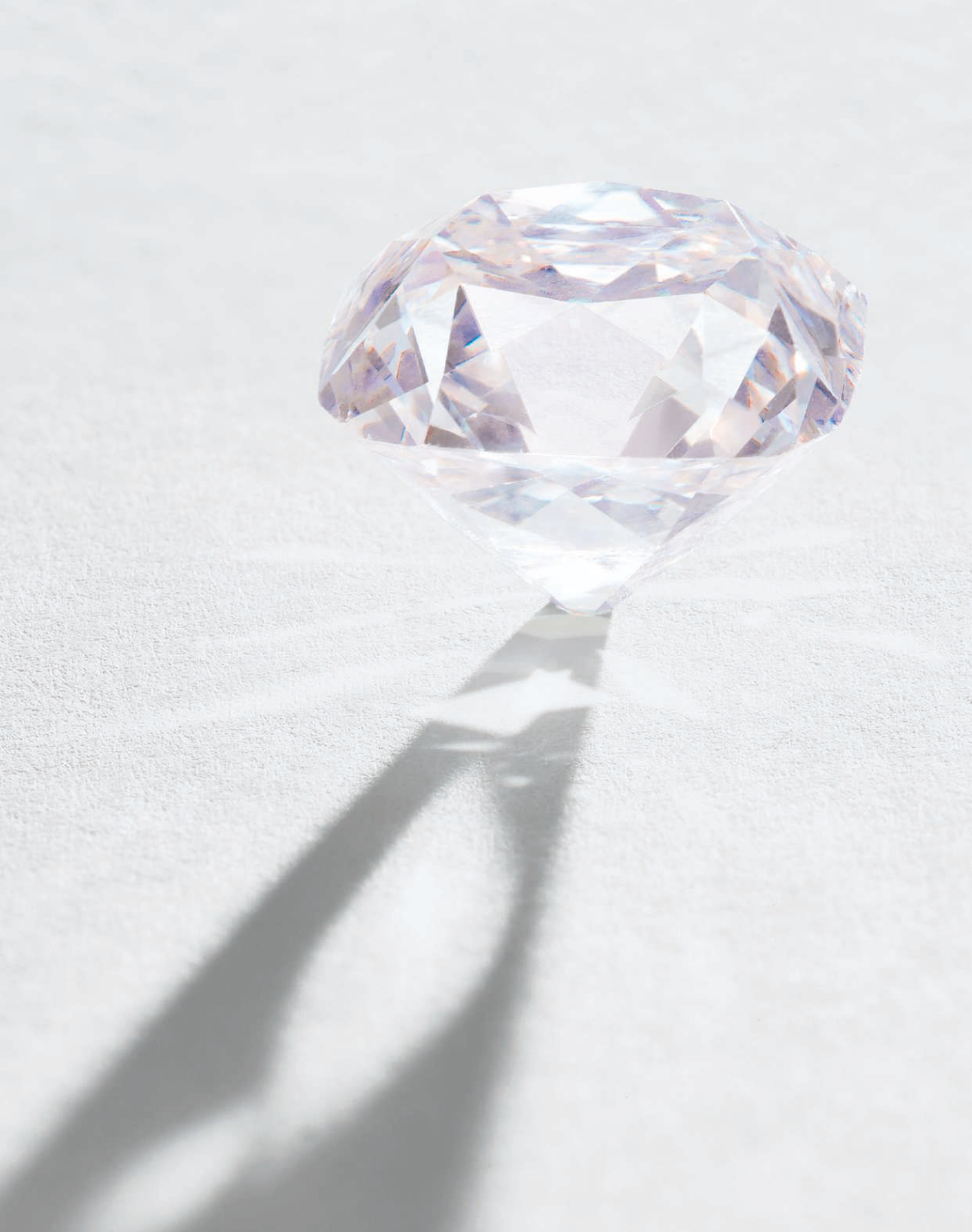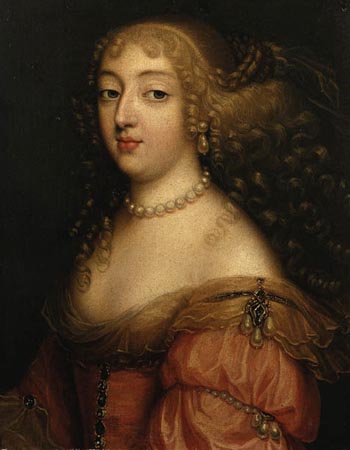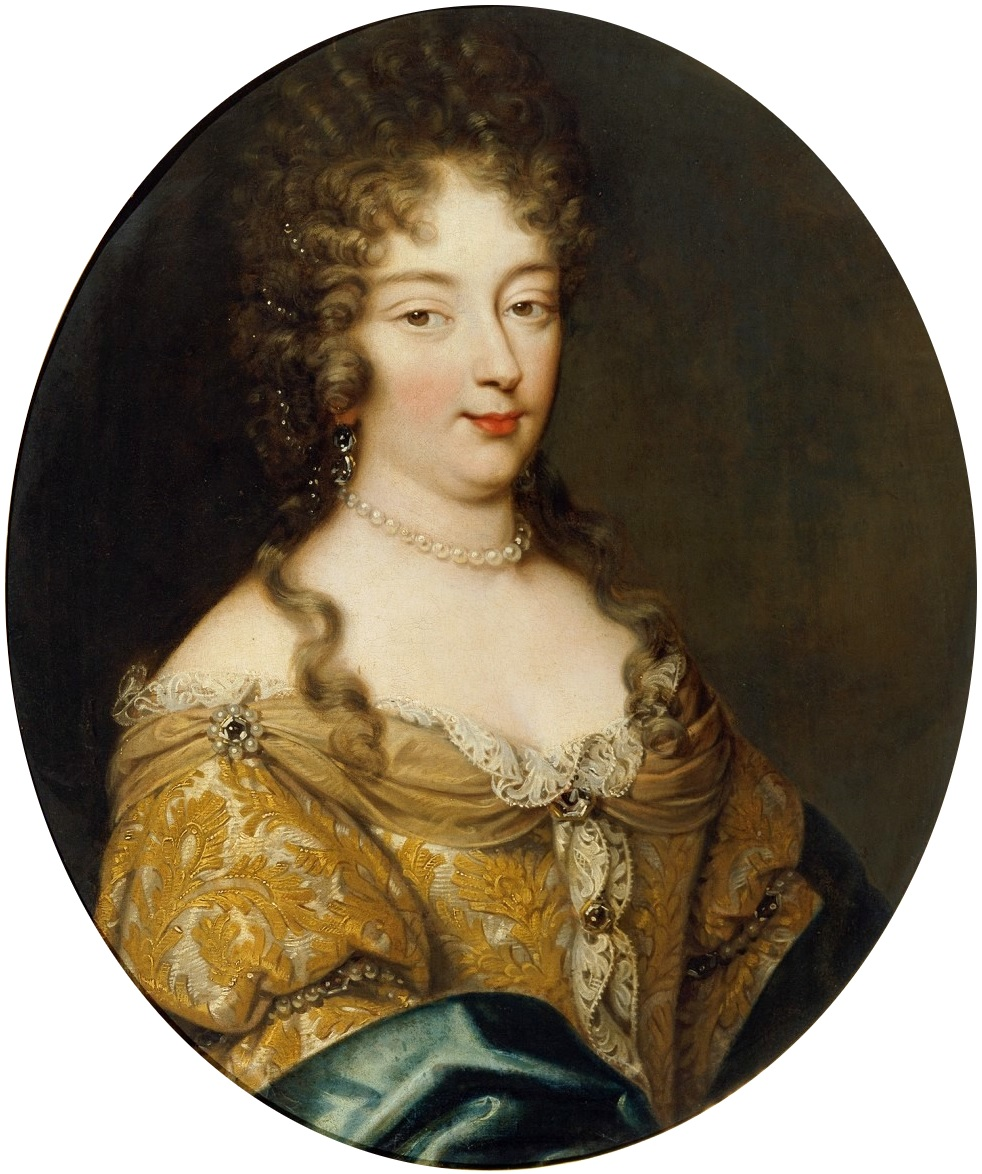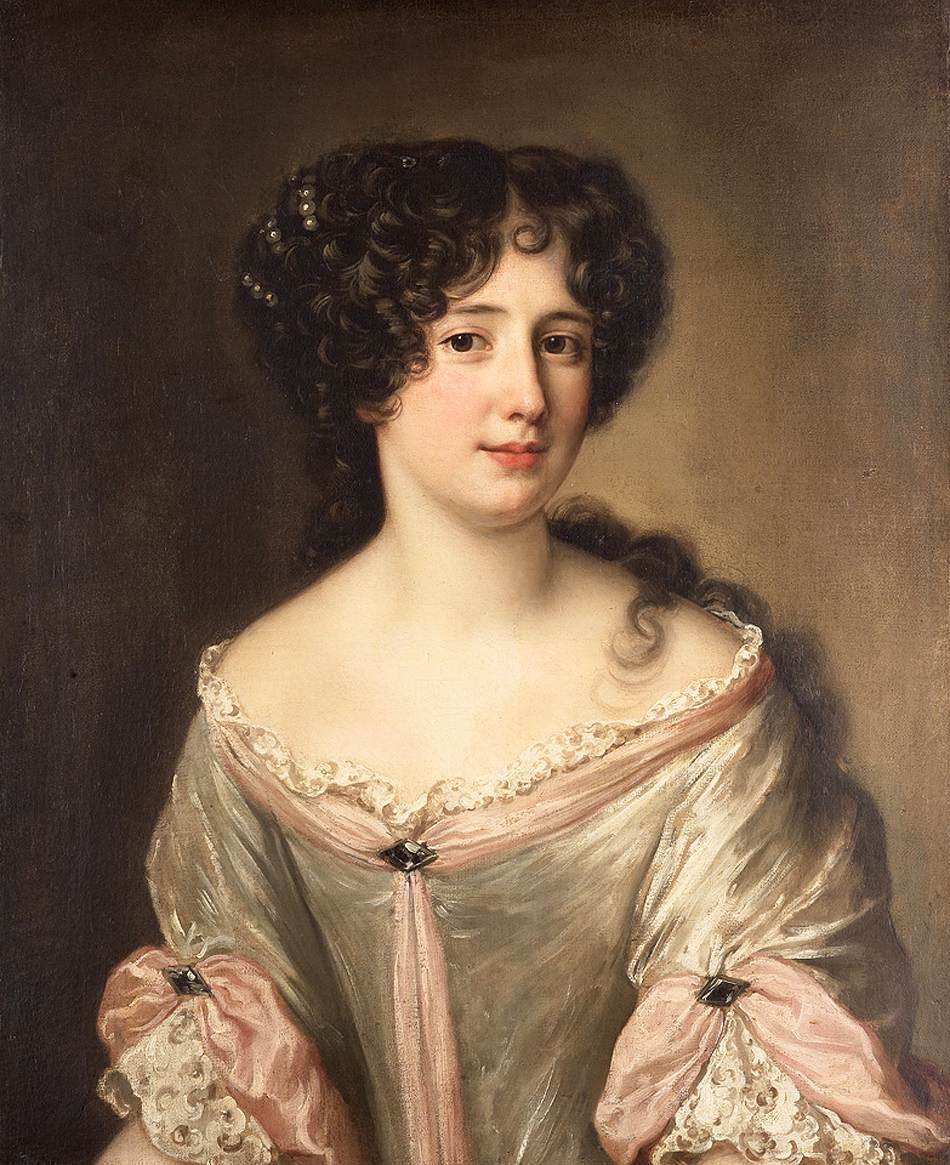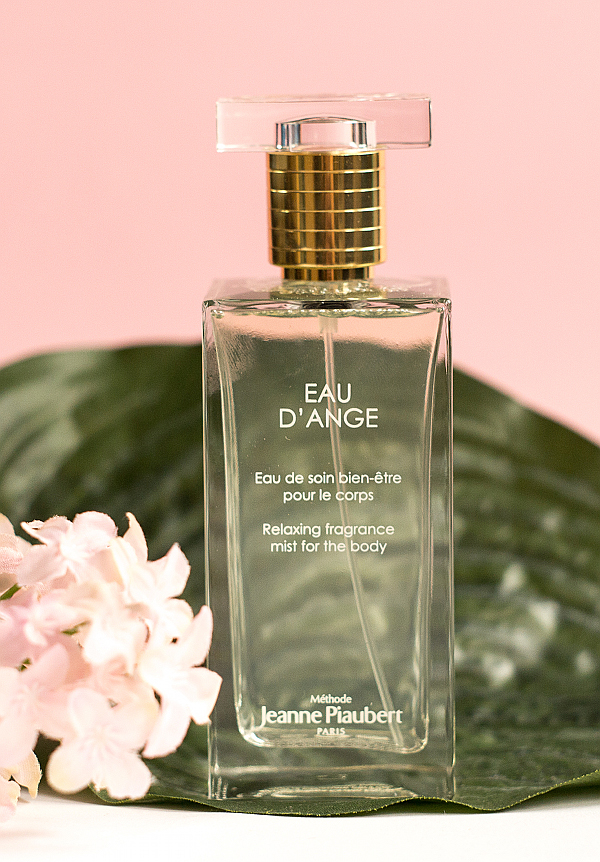Louise-Julie de Mailly-Nesle, Comtesse de Mailly
Years: 1732-39 and 1741-42
Louise-Julie was the first mistress Louis XV took following his marriage to Marie Leszczynska. Although their relationship began as early as 1732 it was not until 1738 that she was officially acknowledged. Louise-Julie was genuinely in love with Louis but never attempted to use her position to gain positions for her family nor interfere with politics. Court intrigues eventually deprived her of her position of dame du Palais to the queen which meant that she no longer had the right to live at court. The king ended their relationship for her sister, Marie-Anne, and she retired to a convent.
 |
| Louise-Julie |
Thérèse-Eulalie de Beaupoil de Saint-Aulaire, Marquise de Beuvron
Year: 1738
She was brought to court due to her husband's rank where she became friends with Louise-Julie de Mailly. Shortly afterwards, she became the king's mistress herself but was soon replaced by Madame Amelot. Thérèse-Eulalie died the following year.
 |
| Thérèse-Eulalie |
Marie-Anne de Vougny, Madame Amelot
Year: 1738
Marie-Anne was the wife of the Minister of Foreign Affairs when she became the king's mistress. However, their affair was very short-lived.
Pauline-Félicité de Mailly-Nesle, Comtesse de Vintimille
Years: 1739-1741
Pauline-Félicité was the sister of Louise-Julie; in 1738 she wrote to her sister asking for an invitation to court for her. Once granted, Pauline-Félicité was immediately received by her sister and the king. Louis XV was very much taken by his mistress' sister and decided to make her one too. However, Pauline-Félicité was more demanding than her pliant sister and asked for a title and a château. The former was granted by a marriage to the Comte de Vintimille and the latter by the lavish gift of the Château de Choisy-le-Roi. She became pregnant by Louis but died in childbirth.
Her body was laid out on parade when a mob broke in and mutilated her body.
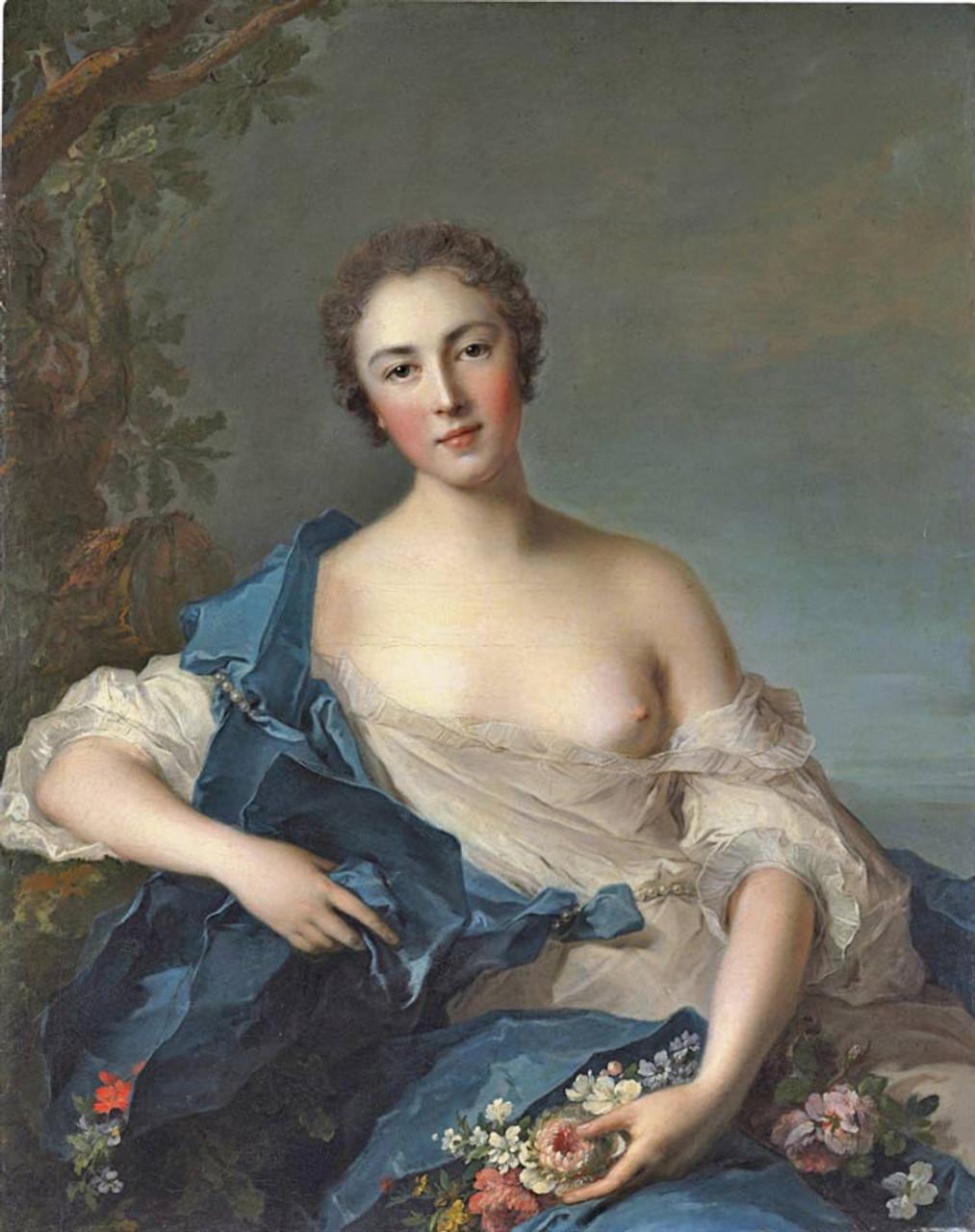 |
| Pauline-Félicité |
Diane-Adélaïde de Mailly-Nesle, Duchesse de Lauraguais
Years: 1742-45
Diane-Adélaïde served the king as his mistress on and off for three years - when her sister, Marie-Anne died, the king was noted to "amuse himself" with Diane-Adélaïde. Actually, her title and marriage was due to the influence of Marie-Anne who demanded these from the king. Diane-Adélaïde sided with Marie-Anne in the feud with their sister, Louise-Julie.
 |
| Diane-Adélaïde |
Marie-Anne de Mailly-Nesle, Duchesse de Châteauroux
Years: 1742-44
Marie-Anne was definitely far more ambitious than her sister, Louise-Julie, and at first refused to give in to the king before he fulfilled her demands. These included the title of duchess, the apartment of the royal favourite and lavish gifts. In private she greatly amused the king by her wit; when Cardinal Fleury died she began her political career. Marie-Anne understood that Louis would take offense if she began dictating state affairs, so she would use different tactics to influence him. She followed the king to Metz during the War of the Austrian Succession where she got ill and died of convulsions.
 |
| Marie-Anne |
Jeanne-Antoinette Poisson, Marquise de Pompadour
Years: 1745-64
By far the most influential maîtresse-en-titre of Louis XV, Madame de Pompadour managed to understand the king in a way that few people had hitherto. She understood that he suffered terribly from melancholia and arranged entertainments that would suit his personality; these included private theatricals and the famous suppers. Unlike Marie-Anne, Jeanne-Antoinette was careful not to alienate the queen by insulting her. She became known as the prime minister since she had immense influence in politics. Their relationship was rather odd; despite her being the king's mistress, she did not wish to share the king's bed after 1751. By then the king had grown so dependent on her that he could not let her go but still needed someone to take care of his "baser" needs. Thus, they came to an agreement that young women from - particularly from the opera - were to be brought to the king for him to have short-lived affairs. In this manner both got what they wanted.
She died before the king who was not allowed to attend her funeral; instead, he watched her funeral cortege leave Versailles from his private apartment.
 |
| Jeanne-Antoinette |
Marthe-Antoinette Aubry de Vatan, Presidente Portail
Years: unknown
Three unknown women known only as "Rose-Blanche", "Belle-Nuit" and "la Pudeur" respectively
Given their rather romantic names it is likely that they were opera-dancers or actresses
A few women were simply known by their names and their exact years in the king's favour are not clear.
Madame de Grandis
Madame de Martinville
Mademoiselle de Ville (a professional courtesan)
Madame de Beadier
Mademoiselle de Malignan
Madame de Salis
Françoise-Catherine Boutinon Deshayes, Madame de La Pouplinière
Year: unknown
She attempted to become the new maîtresse-en-titre following the death of Madame de Châteauroux but failed miserably. Apparently, the king had invited her to wait in his private bedroom where he let her wait - due to the coucher-ceremony dragging out - and when he finally arrived he was too tired. Humiliatingly, Françoise-Catherine was asked to leave.
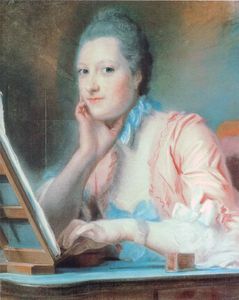 |
| Françoise-Catherine |
Louise-Julie Constance de Rohan-Montauban, Comtesse de Brionne
Year: unknown
It seems that her relationship with Louis XV could have been platonic but it is note quite certain. Louise-Julie became a close friend to Madame de Pompadour so she definitely had access to the king.
 |
| Louise-Julie |
Louise Augustine Crozat de Thiers, Duchesse de Broglie
Year: after 1754
Louise was a companion to the king's younger daughters in the years 1754-1762; thus, she lived at Versailles full time. Not long after her introduction to court following her second marriage, she caught the eye of Louis XV who made her his mistress.
 |
| Louise Augustine |
Marguerite-Elisabeth-Flavie de Cohorn de La Palun, Comtesse de Noé
Year: unknown
Marguerite-Élisabeth was at court due to her husband, Louis, being in the service of the Duc d'Orléans. Very little is known about her other than that she had a son by her husband.
Anne-Marie de Montmorency-Luxembourg, Princesse de Robecq
Year: 1748 or 1749
The anti-Pompadour courtiers hoped that the Princesse de Robecq would usurp the place of the royal favourite. These hopes seemed to be coming true when Louis and Madame de Pompadour hit a rough patch due to the poor health of the maîtresse. Anne-Marie and Louis were even noted to have gone missing for about 15 minutes following a trip to the Château de La Muette. However, Anne-Marie's relationship with the king quickly cooled and she turned to the future Duc de Choiseul instead.
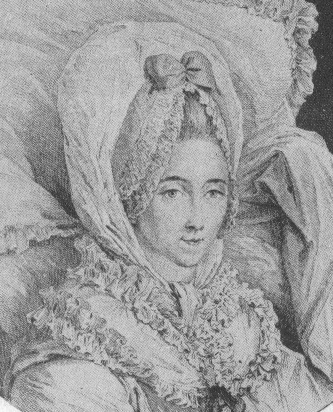 |
| Anne-Marie |
Marie-Anne-Françoise de Noailles, Comtesse de La Marck
Year: 1748
Marie-Anne was only mistress to Louis XV for a very short time; her and her husband were granted lodgings at Versailles despite not having a specific position at court.
Élisabeth-Charlotte Huguet de Sémonville, Comtesse d'Estrades
Year: supposed affair in 1749
Élisabeth-Charlotte was the one who introduced the future Madame de Pompadour to court in 1745. Apparently, she attempted to interfere quite a lot in the king's love life. Due to the favour she had done to Madame de Pompadour, Élisabeth-Charlotte was often invited to the king's private suppers. Here she attempted to entice the king but only succeeded in allegedly having a very brief affair with him. Failing in dethroning Madame de Pompadour herself, she attempted to push the young Comtesse de Choiseul into his arms.
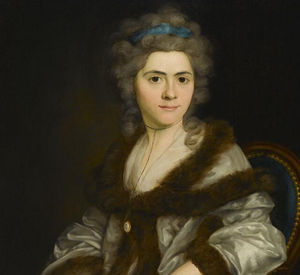 |
| Élisabeth-Charlotte |
Marie-Françoise de Carbonnel de Canisy, Marquise d'Antin
Year: 1749
Marie-Françoise was another renowned beauty who captured the eye of Louis XV. She was known to have shared the king's bed for a while during Madame de Pompadour's reign. When her husband died in 1753 she preferred to live at her hôtel in Paris where she could meet with her lover, Baron Scheffer.
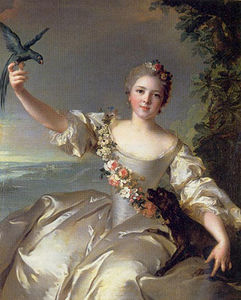 |
| Marie-Françoise |
Françoise de Chalus, Duchesse de Narbonne-Lara
Year: 1749-1750
Françoise's relationship with the king sparked a lot of rumours. Her affair with the king began in 1749 and gave birth to a son in 1750. For her birth she travelled to Parma which caused courtiers to speculate that the child's paternity was a bit more royal than the Duc de Narbonne-Lara since Louis XV's eldest daughter had been married to the Duke of Parma.
 |
| Françoise |
Alexandrine Sublet d'Heudicourt, Marquise de Belsunce
Year: 1750
Alexandrine was an object of the king's attentions but eventually found herself overshadowed by the emergence of Madame de Pompadour.
Marie-Geneviève Radix de Saint-Foix
Years: 1750-1751
Marie-Geneviève was the wife of the minister for finance. However, her affair with Louis XV raised quite some eyebrows for one particular reason: she was also the mistress of his son! Neither the king nor the dauphin chose to make her an official mistress, though.
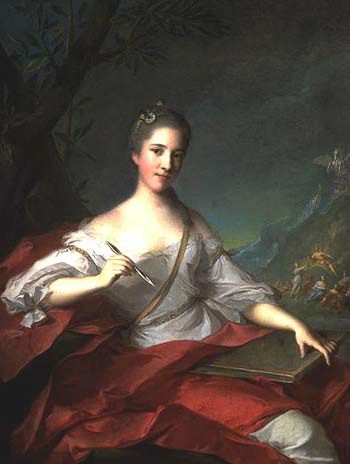 |
| Marie-Geneviève |
Irène du Buisson de Longpré
Years: 1750 and 1760
Children: possibly a girl named Julie Filleul
Irène was first introduced to the king through the Parc-aux-Cerfs and the king seemed to have liked her company.
Charlotte-Rosalie de Romanet, Comtesse de Choiseul-Beaupré
Year: 1752
Unlike some of the king's other mistresses, Charlotte-Rosalie attempted to make a show of denying the king - for a while she openly declared that she would not betray her husband. However, she did eventually which caused Madame de Pompadour some concern. The favourite had little cause to fear which the king reassured her since the Comtesse was a passing passion.
Mademoiselle Trusson
Year: 1752
Mademoiselle Trusson was the daughter of two servants at court. Her father was a clerk to the minister of foreign affairs and her mother served Marie-Josèphe de Saxe. Nevertheless, she became associated with Madame de Pompadour who found that she could safely let Mademoiselle Trusson climb into the king's bed without fear.
Jeanne-Marguerite de Niquet
Year: 1752
The daughter of the president of the Toulouse parliament, Jeanne-Marguerite was another woman who went through the Parc-aux-Cerfs. She would later be called upon by the king again when Marie-Louise O'Murphy fell pregnant.
Mademoiselle de Saint-André
Year: 1752
Little is known about Mademoiselle de Saint-André other than that she was the daughter of a hair-dresser.
Marie-Louise O'Murphy
Years: 1753-1755
Children: Agathe-Louise de Saint-Antoine de Saint-André
The Irish Marie-Louise took the king by storm who nicknamed her Morphise. She fell pregnant twice by the king - the second time she almost died during childbirth. Louis became all the more attached to her after the near-fatal delivery and had her painted in a rather famous portrait (below). Marie-Louise made a crucial mistake when she attempted to dethrone Madame de Pompadour; she was quickly dispatched from her lodgings at the Parc-aux-Cerfs in November 1755 and married off to Jacques Pelet de Beaufranchet.
 |
| Marie-Louise |
Thérèse Guerbois
Year: 1754
Brigitte O'Murphy
Year: 1755
Brigitte was the sister of Marie-Louise O'Murphy; following the fall of her sibling she quickly took her place although Brigitte never got as close to Louis XV as Marie-Louise had. She would continue to receive little gestures of goodwill through her lifetime, mostly in the shape of pensions.
Mademoiselle Fouquet
Year: 1755
Another daughter of a hairdresser, Mademoiselle was thanked for her services by being married off by the king himself.
Mademoiselle Robert
Year: 1755
Mademoiselle David
Year: between 1755-1759
Mademoiselle David would not be married off but ended her days in a convent instead.
Mademoiselle Armory
Year: between 1755-1759
Mademoiselle Armory was nicknamed Mimi and was a professional opera dancer. She became the mistress of both Louis XV and the Duc de Choiseul; after these liaisons she married an American.
Gabrielle-Charlotte Françoise d'Hénin-Liétard, Vicomtesse de Cambis
Year: 1756
Gabrielle-Charlotte had became a protegée of Madame de Pompadour which is how she came to be near the king. Her aunt, the Marèchale de Mirepoix, had great ambitions on her behalf and placed Gabrielle-Charlotte in the king's bed. Alas, she faced the same fate of many before her and discovered that the king quickly lost interest.
 |
| Gabrielle-Charlotte |
Dorothée
Year: 1756
Dorothée was the daughter of a water-carrierer in Strasbourg which is all that is really known of her.
Mademoiselle Selin
Year: 1756
It is speculated that Mademoiselle Selin was of bourgeoise-origins from Brittany - it is not unlikely considering the king's fondness for the rising middle-class.
Marie-Anne de Mailly-Rubempré, Marquise de Coislin
Year: 1757
Marie-Anne had been introduced to the king back in 1755 by an associate of the Prince de Conti. It took a while but she eventually became the king's mistress; however, the king eventually gave her up after Madame de Pompadour expressed her anger about it.
 |
| Marie-Anne |
Marie-Louise de Marny
Year: 1758
She was the wife of banker by the name of Giambone and her appearance was described as "very beautiful with almost childlike features".
Marguerite-Catherine Haynault, Marquise de Montmélas
Years: 1759-1762
Children: Agnès-Louise de Montreuil and Anne-Louise de La Réale
Marguerite-Catherine was employed as a lady-of-honour to Madame Adélaïde; she became Louis XV's mistress at the age of 23. She and Louis had two daughters before she was married off to the Marquis de Montmélas. Following the birth of their second daughter, the affair ended.
 |
| Marguerite-Catherine |
Louise Jeanne Marie de Courtarvel de Pezé, Marquise de Dreux-Brézé
Year: 1760
Louise had been brought up at court where she had long admired Louis. One day the two accidentally ran into each other which became the start of their relationship. Louise rented a house in Sèvres where the two would meet. She, too, became pregnant and begged the king to send her husband on a diplomatic relationship which was refused due to his rash personality. It is possible that Louise lost the child since there is no record of it.
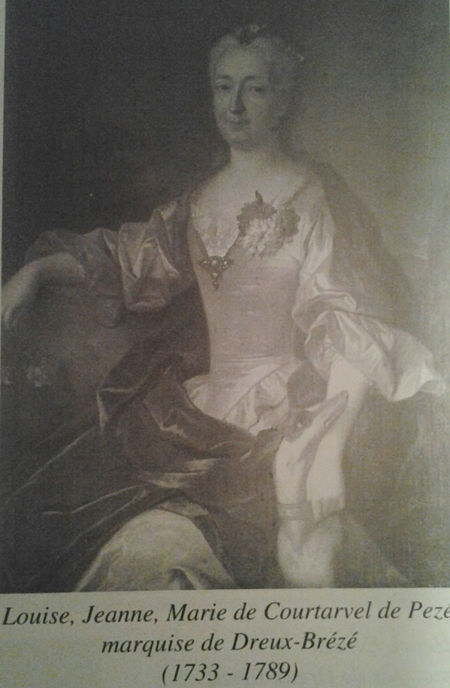 |
| Louise |
Marie-Madeleine Couppier de Romans
Year: 1760-1765
Children: Louis-Aimé de Bourbon
Marie-Madeleine was not lodged in the Parc-aux-Cerfs but was instead set up in a house of her own in the village of Passay. Louis XV would have her fetched from there to Versailles or he would come to visit her during his visits to La Muette. The king began to refer to her as his "belle Madeleine" which caused Madame de Pompadour to worry. Soon, favours and gifts began to rain down over Marie-Madeleine and she even managed to extract a promise from Louis that he would acknowledge their child if she should become pregnant. However, Louis did not honour this pledge when their son was born.
In the end it was Marie-Madeleine's own behaviour that led to her downfall. She treated her son by Louis as a child of France and flaunted him at court. Eventually, the king grew tired of it and following an implication in the Affair of La Chalotais she was exiled to a nunnery.
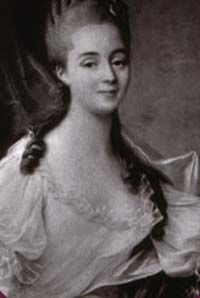 |
| Marie-Madeleine |
Lucie-Madeleine d'Estaing
Years: 1760-1763
Children: Agnès-Lucie Auguste and Aphrodite-Lucie Auguste
Lucie-Madeleine was the illegitimate daughter of Admiral d'Estaing who eventually legitimized her when he had no other children. She thus became his heiress. Lucie-Madeleine became Louis' mistress when she was 17 years old. Their two children were recognized by Louis XVI in 1774.
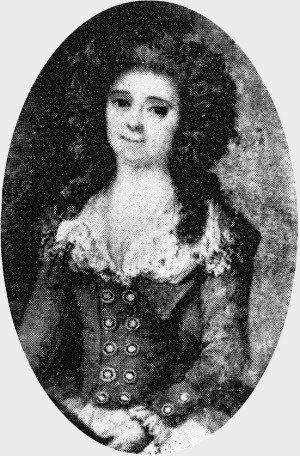 |
| Lucie-Madeleine |
Louise-Jeanne de Tiercelin de La Colleterie
Years: 1762-1765
Children: Benoît Louis le Duc
Louise-Jeanne was the daughter of a cavalry officer; she was 16 years old when she became his mistress. Louis was charmed by her often childish behaviour. Louise-Jeanne's ambition caused the end of her time with Louis. She had sought help as to make her son legitimate which greatly angered Louis and she was exiled to the provinces.
Béatrix de Choiseul, Duchesse de Gramont
Year: 1764
Béatrix was a friend of Madame de Pompadour and a frequent guest in the private suppers hosted by her and the king. When Madame de Pompadour died she attempted to take her place but Louis thought her too dominant and ambitious. Consequently, he rejected her and in time gave the title of maîtresse-en-titre to Madame du Barry.
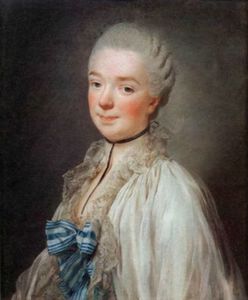 |
| Béatrix |
Anne-Thoynard de Jouy, Comtesse d'Esparbès de Lussan
Years: between 1762-1765
Anne-Thoynard was introduced at court in 1758 where she became a part of Madame de Pompadour's entourage since they were distant relatives. Madame de Pompadour would turn a blind eye to her escapades with king; after all, Anne-Thoynard was not known for her virtue. Upon the death of the favourite, the Prince de Soubise attempted to get Anne-Thoynard named as the new declared mistress. The court was all but expecting it when she was granted lodgings at Choisy. However, something happened and rather than becoming his mistress, she was told to retire from court - basically being exiled.
 |
| Anne-Thoynard |
Catherine-Éléonore Binary
Year: 1768
Children: Adélaïde de Saint-Germain
Catherine-Éléonore was a companion to Madame Adélaïde when she became Louis' mistress. Not long after her affair became known she was found to be pregnant. Her daughter was suspected to be the result of her time with Louis. Sadly, Catherine-Éléonore died from complications following the birth.
Marie-Thérèse Boisselet
Year: 1768
Children: Charles-Louis Cadet de Gassicourt
Marie-Thérèse had a son whose paternity was speculated at. While he received the surname of Marie-Thérèse's husband, his conception coincides with the time of her affair with Louis.
 |
| Marie-Thérèse |
Jeanne-Marguerite Salvetat
Year: 1768
Jeanne-Marguerite was an actress (an reputedly a poor one) who was also known as Madame Mars. Due to her background she could not be presented at court and her liaison with Louis in 1768 turned out to be brief.
Jeanne Bécu, Comtesse du Barry
Years: 1768-1774
Jeanne was the last maîtresse-en-titre in the ancien regime. She had a background as a professional courtesan when she was introduced to Louis. Not long after becoming acquainted with her, Louis had her installed in the apartment above his own; however, Jeanne had not been presented at court and was thus confined to her chambers. She was finally presented in 1769. Louis showered her with gifts and jewels and she generally became accustomed to a life of luxury.
She was exiled from court when Louis XV died in 1774.
 |
| Madame du Barry |
Madame Bèche
Year: 1771
Madame Bèche was the daughter of a musician at court and she was considered to be very beautiful which earned her a place in the king's bed for a while.
Françoise-Marie-Antoinette de Saucerotte, Mademoiselle de Raucourt
Year: 1772
Françoise was an actress at the opera; it was her role as Dido in 1772 that got her in contact with Madame du Barry. From there it was not long before she also became one his minor mistresses. Louis was remarked to be very taken by her and completely doted on her.
 |
| Françoise-Marie-Antoinette |
Madame d'Amerval
Year: 1772
Madame d'Amerval was the illegitimate daughter of the Abbé de Terray; she was just 13 years old when she was pushed into the king's bed by her relatives. Madame du Barry had sanctioned the affair hoping to take up the role that Madame de Pompadour had previously filled. Their affair was not long-lived.
Rose-Marie-Hélène de Tournon, Vicomtesse du Barry
Year: 1773
Rose was a relative by marriage to Madame du Barry; she had married the favourite's nephew in 1773. It is likely that she became Louis' mistress for a short while to which her aunt curtly commented that at least it "remained in the family".
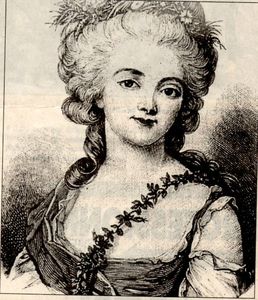 |
| Rose-Marie-Hélène |
Albertine-Élisabeth van Nyvenheim
Year: 1774
Albertine-Élisabeth was often used by anti-du Barry courtiers as an alternative to the royal favourite. The plan - hatched by d'Aiguillon and Choiseul - was to wait until Madame du Barry left to take the waters away from Versailles and then replace her with Albertine-Élisabeth. However, that never came to anything because the king died beforehand.
 |
| Albertine-Élisabeth |
GemGemGemGemGemGemGemGem
GemGem





























